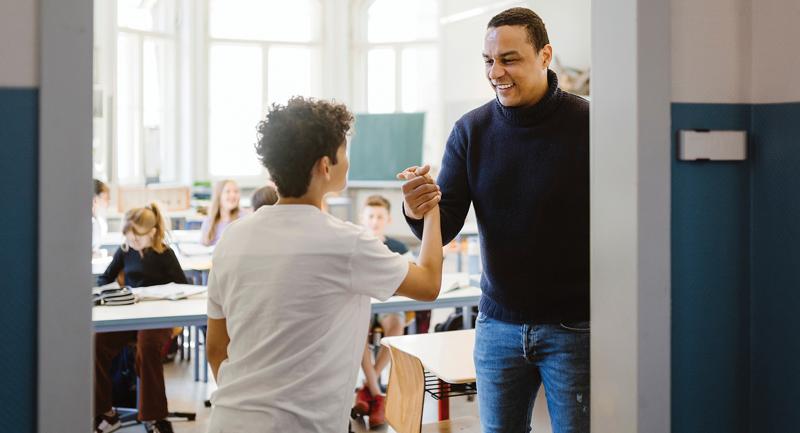In the early days of my teaching, one of my "hardcover mentors" was Haim Ginott, a psychologist and author who seemed to possess a wisdom about relating to children that I knew I wanted to develop. He spoke of the trust of teaching (and parenting) with a mixture of reverence and common sense, and I read what he wrote over and over so his words would permeate my thinking in the classroom. He spoke to me in equal parts about creating a classroom world I felt my students deserved to live in, and a world I needed to live in as well. He and several other "hardcover mentors" shaped my teaching, and some 40 years later, they continue to shape it.
"I've come to a frightening conclusion that I am the decisive element in the classroom," Ginott said. "It's my personal approach that creates the climate." At another point, he advised, "How can we help a child change from undependable to dependable, from a mediocre student to a capable student, from someone who won't amount to very much to someone who will count for something? The answer is at once both simple and complicated: We treat a child as if he already is what we would like him to become."
Becoming Worthy Citizens
It's a complicated world we live in, roiling with conflicts, injustice, disrespect, and chasms of all kinds. There's plenty for young people to learn about what it means to be a good citizen of the classroom and school, let alone a good citizen of the world. It's a tricky business for teachers to tackle issues that are highly charged. There's no easy path to listening, empathizing, understanding diverse views on critical issues, thinking clearly, using viable evidence to shape thought and expression, learning to disagree without disrespect, and the scores of other skills and attitudes that are foundational to effective citizenship.
Nonetheless, since my days with Ginott, I have been a disciple of the idea that, as teachers, in tandem with our students, we have the opportunity to craft classrooms that reflect what it means to be worthy citizens of the various "communities" in which we find ourselves—home, classroom, school, team, neighborhood, state, country, and world.
Classroom as Community
We create these environments by inviting students to help craft a classroom that works for everyone in it, modeling respect, establishing lofty expectations, and teaching students to support one another's successes. We move in that direction as we listen carefully to the people we teach and as they see us attending to the various perspectives they bring into the room with them.
We make strides in the right direction when we dignify the content we teach, thus helping students look with awe at the world around them—helping them understand the power of history and art and literature and science and music and mathematical reasoning. I think we get closer to the mark when we read books together that take students into worlds and lives they have not experienced, showing them the shared humanity of all people, and when we use resources that reflect the voices, beliefs, dreams, and fears of people who came before us and people who live among us now.
We make concrete our intent to create a model domain for citizenship in our classrooms when we effectively use instructional approaches like morning meetings, structured academic controversies, complex instruction, opinion lines, Socratic seminars, literature circles, inquiry learning, and rubrics that include habits of mind and work. We work toward that goal when we teach the skills necessary to support success for the very broadest range of learners and when we call on students to display the traits of responsible thinking along the way.
It's daunting work to create a classroom world that models what we hope the broader world could be. We'll fail at it often, but there's learning in those failures—for us and for our students. Commending, modeling, and teaching what it means to be a contributing citizen is not a fool's errand. In the end, all other things we try to teach mean little if we are delinquent in this fundamental arena.







